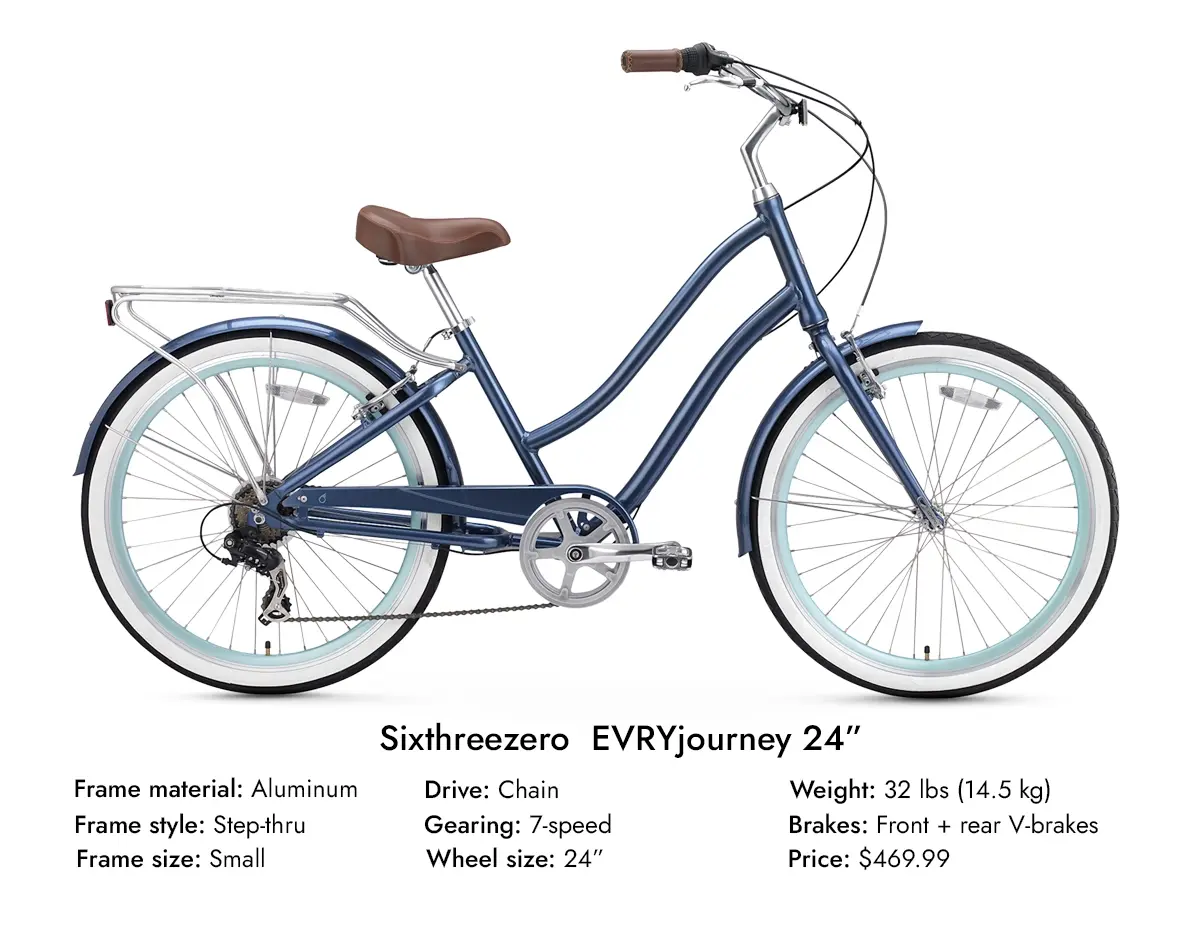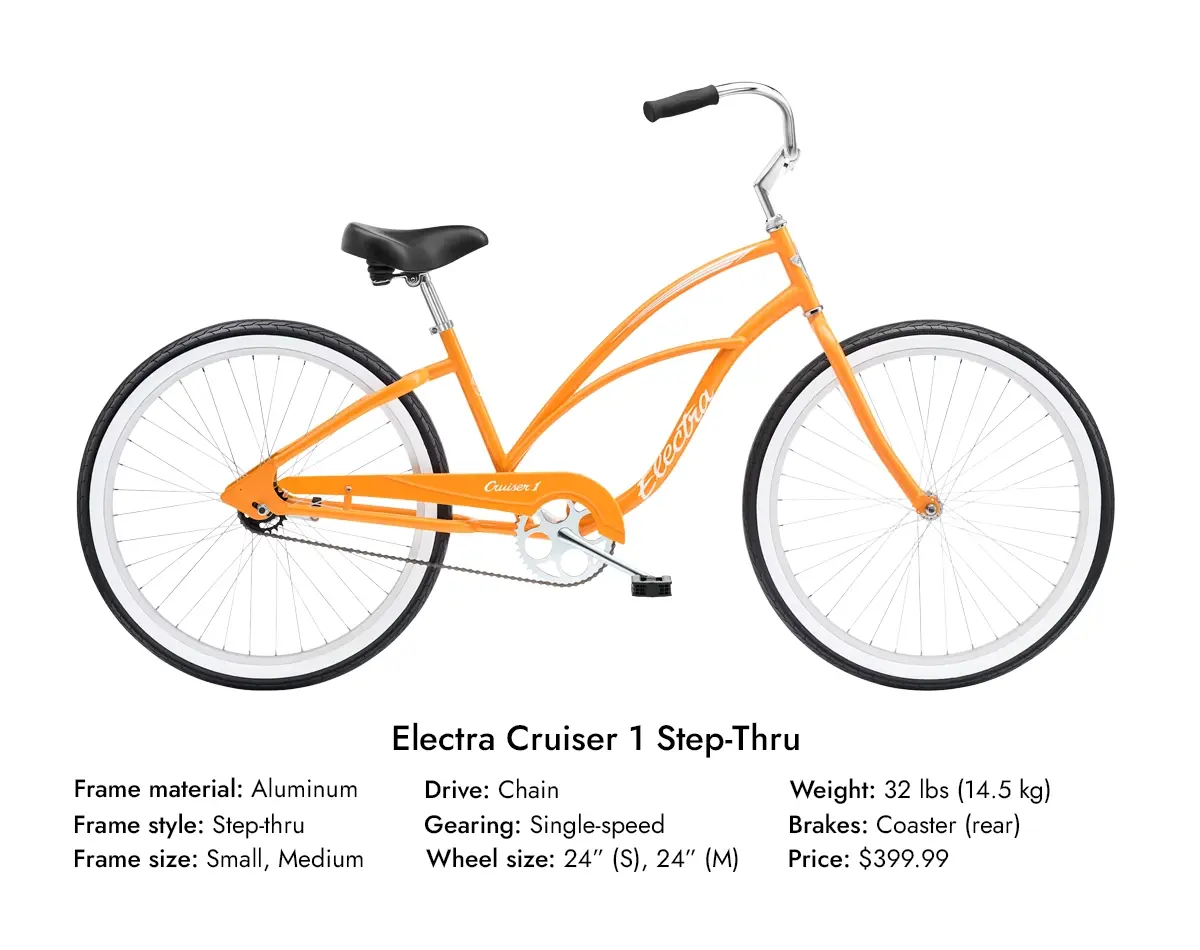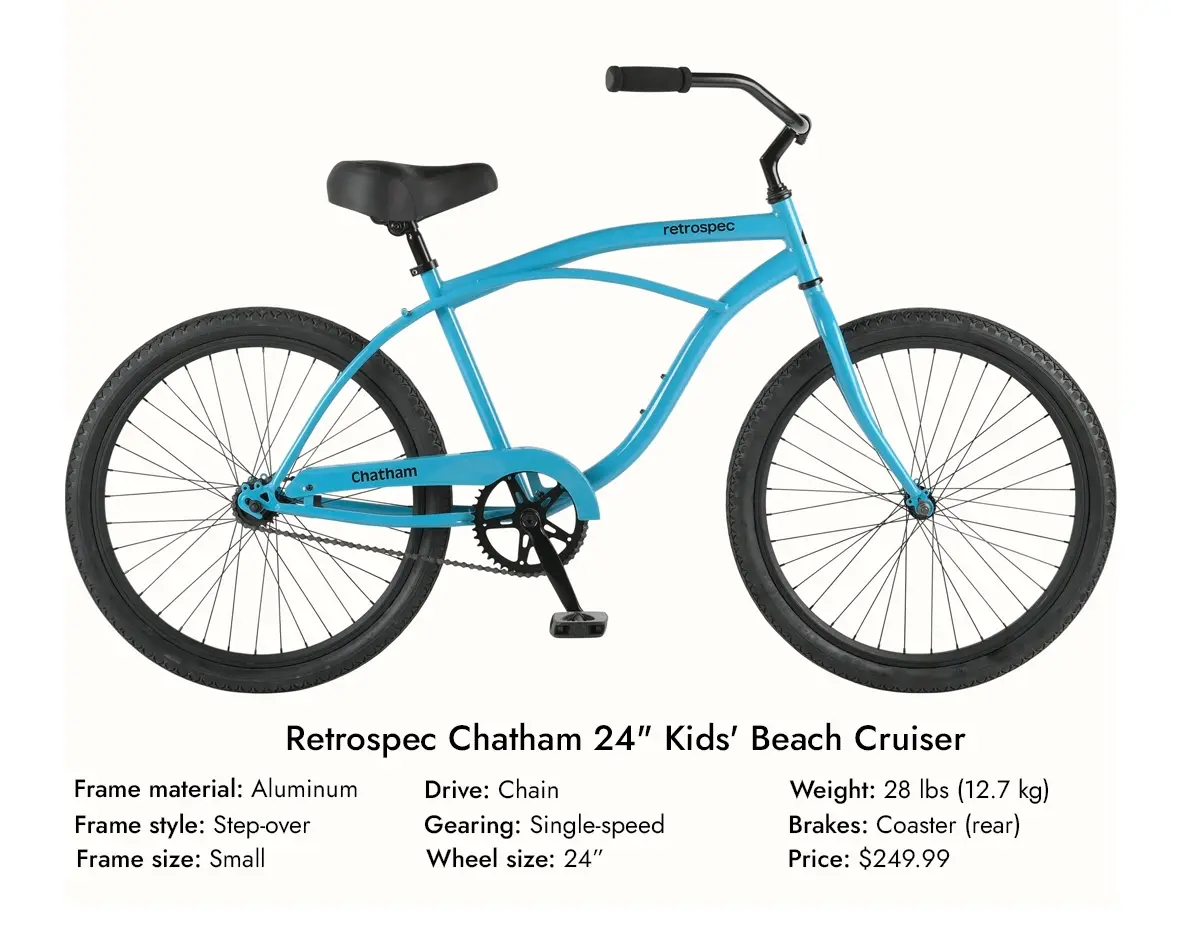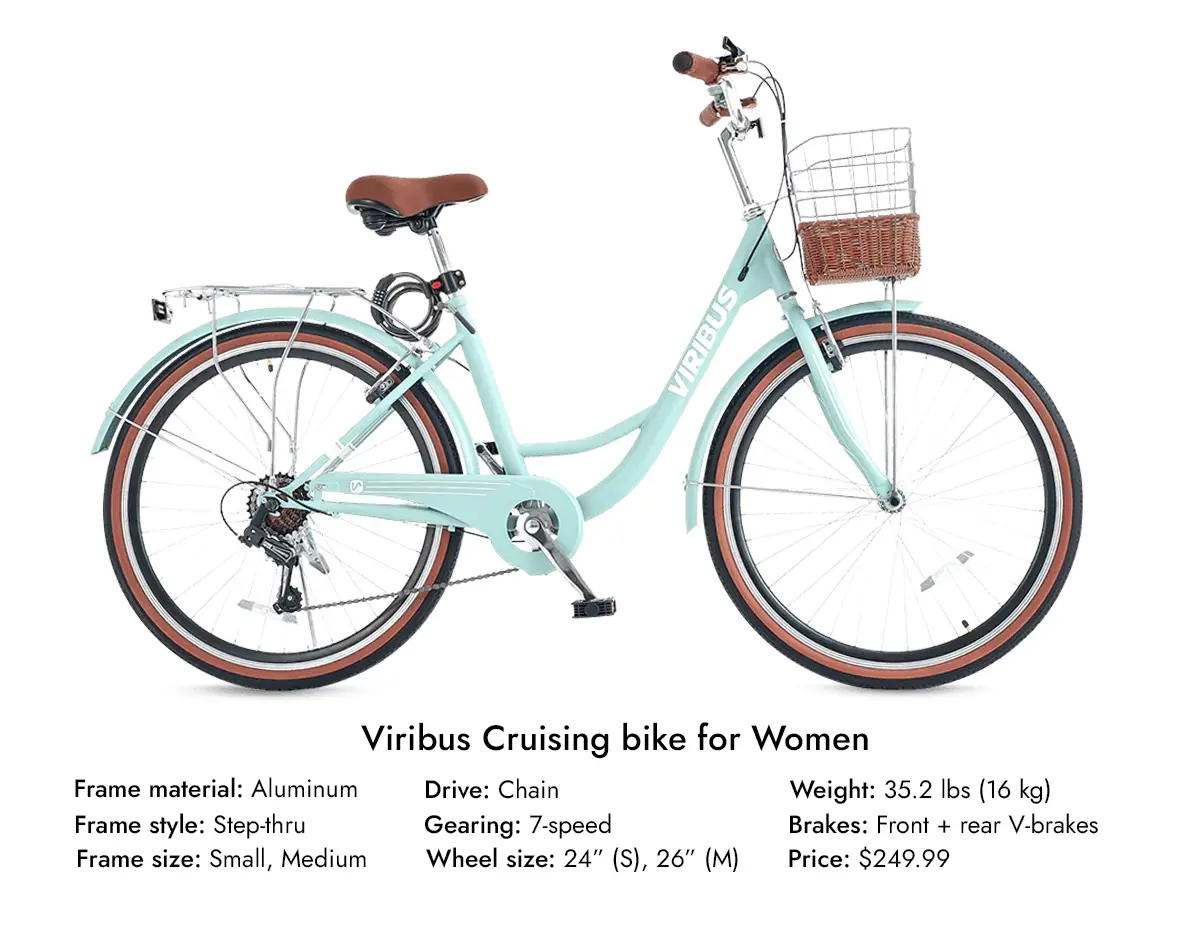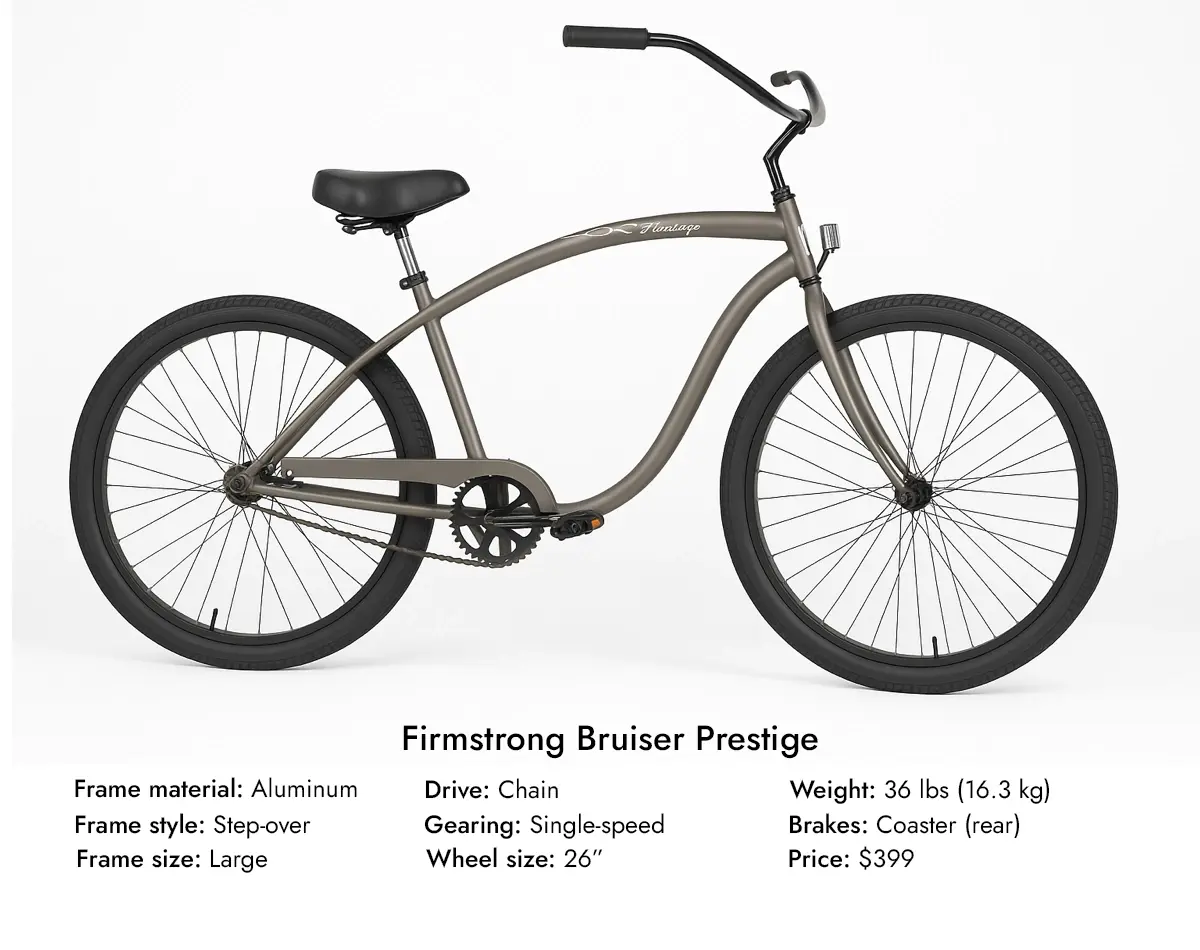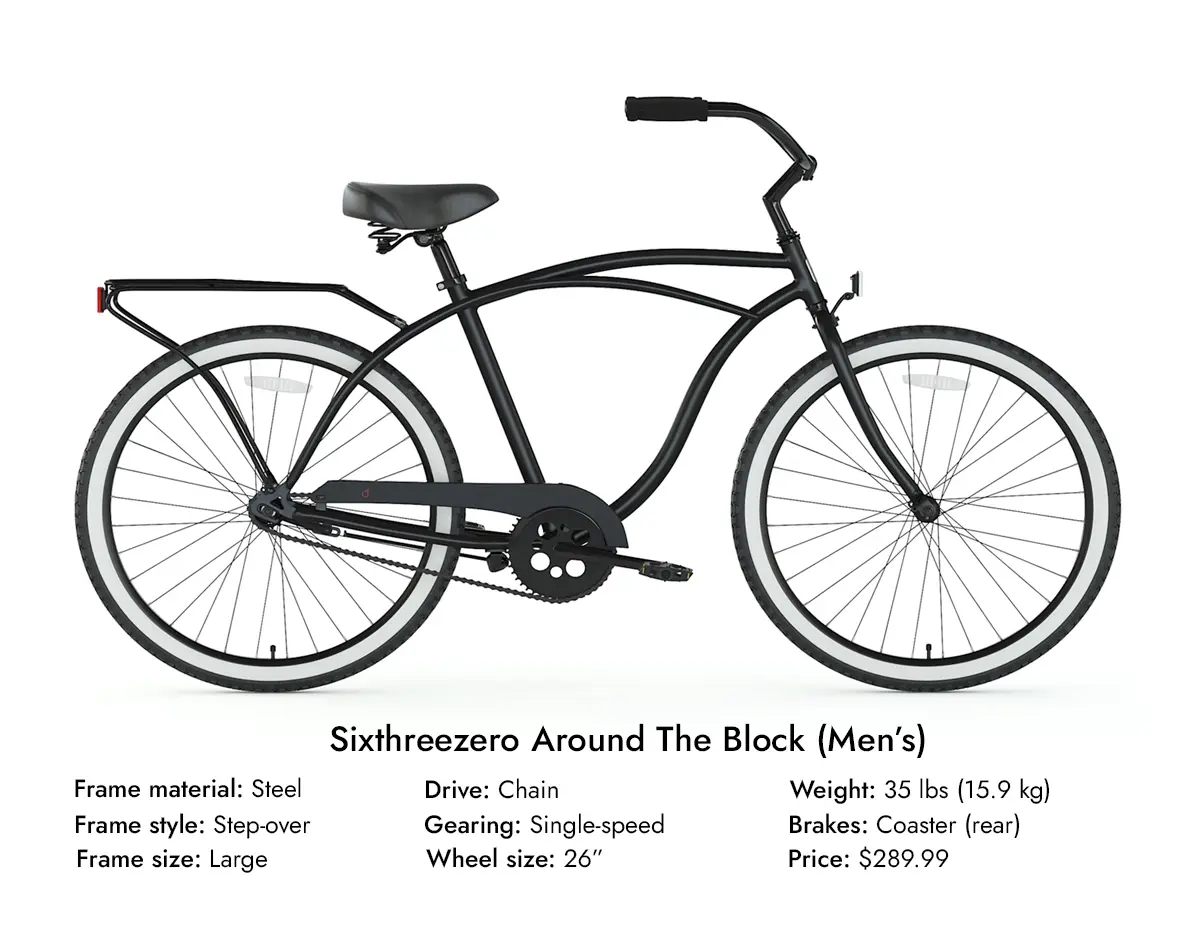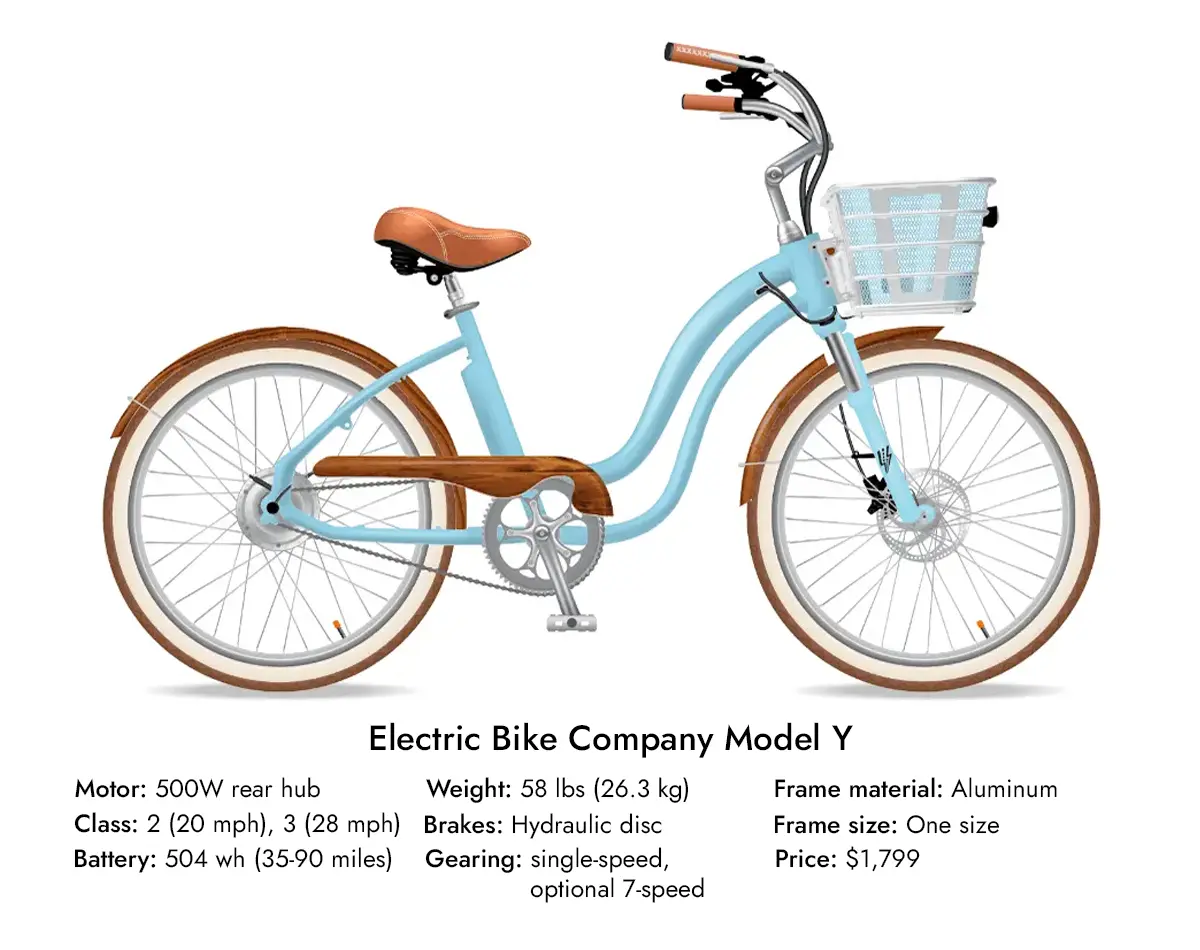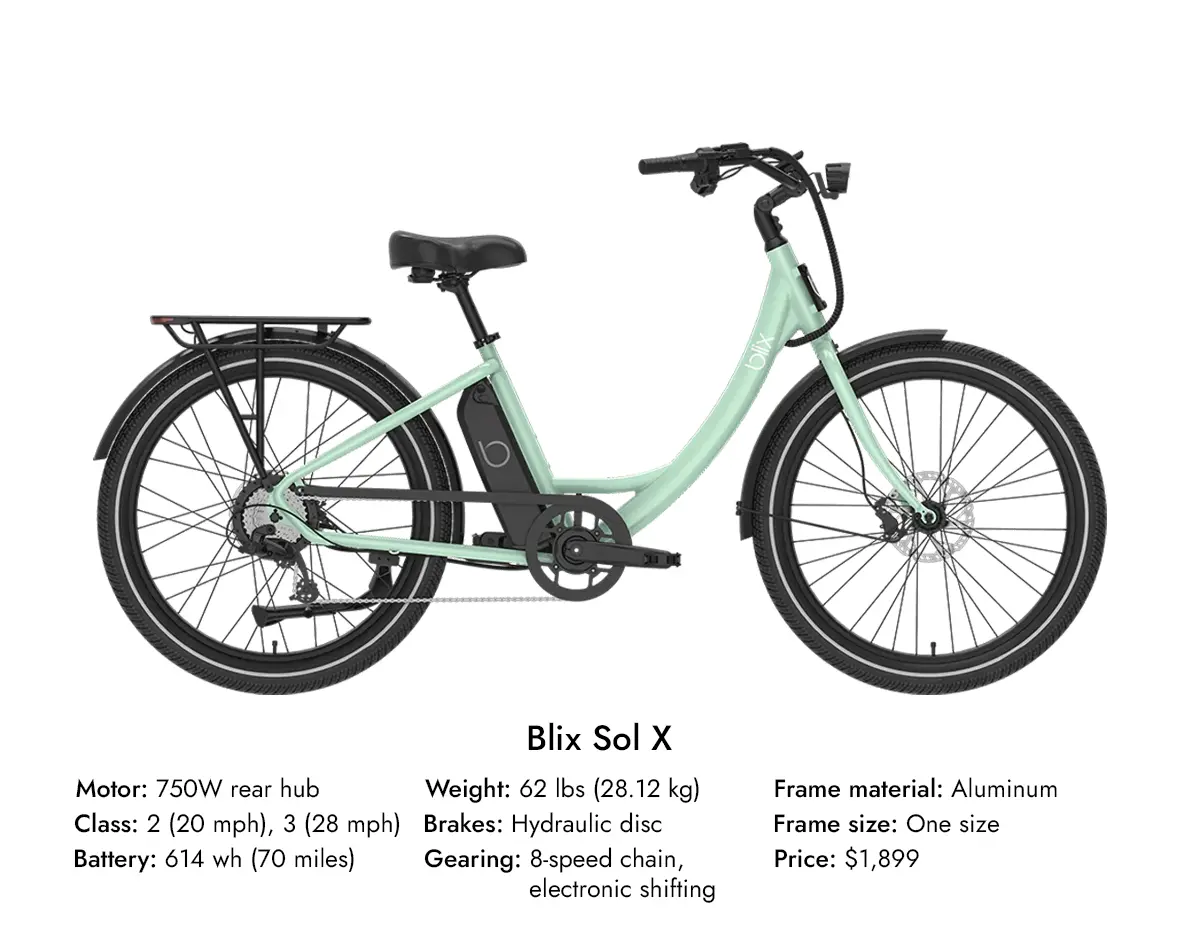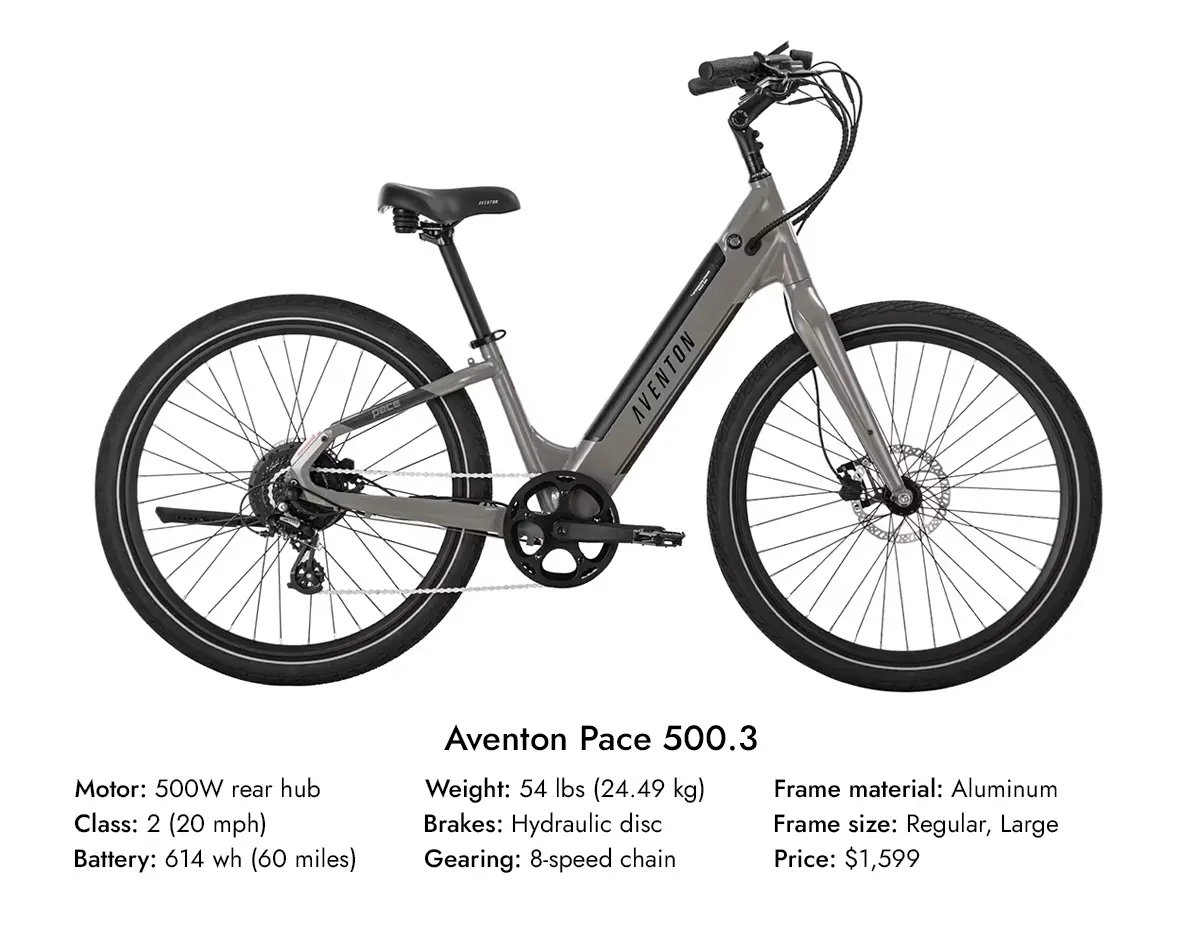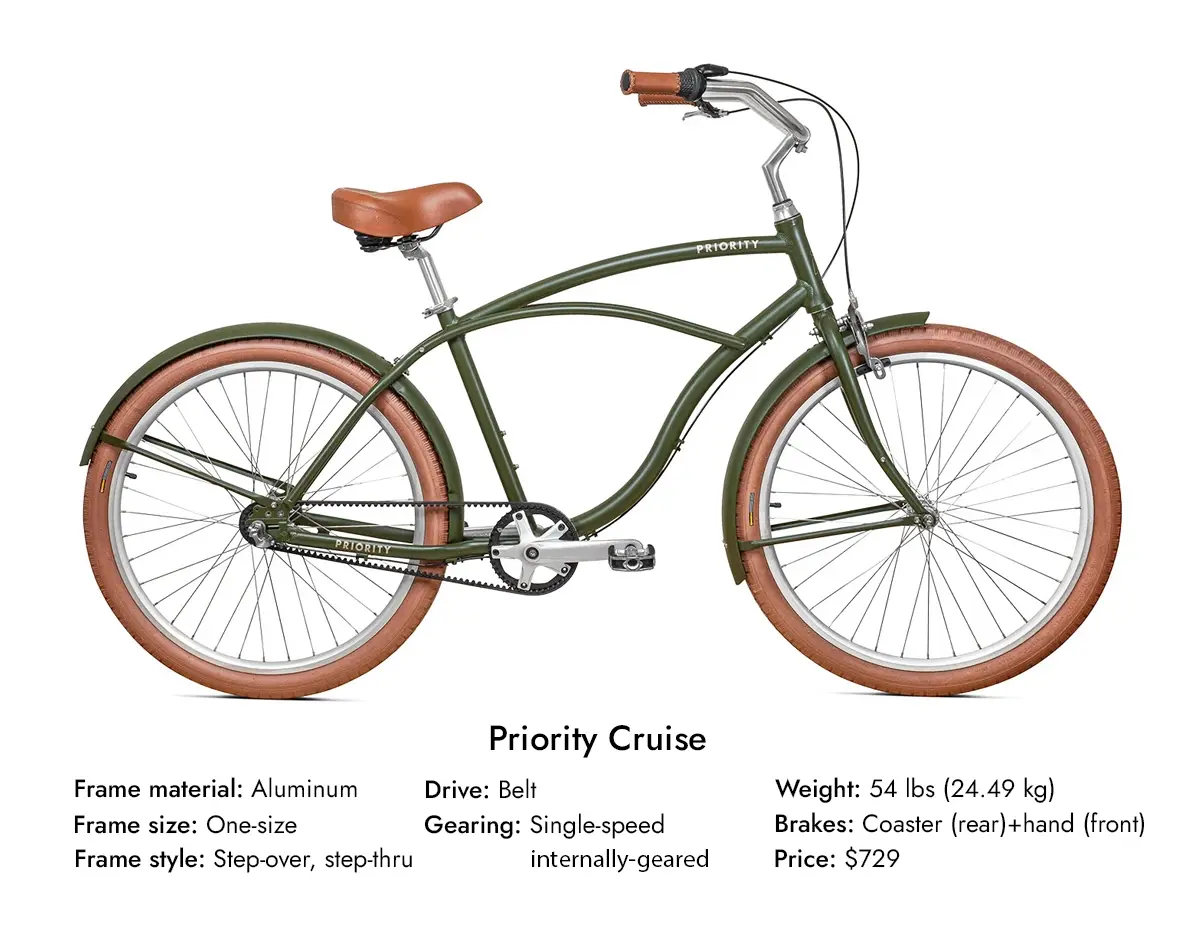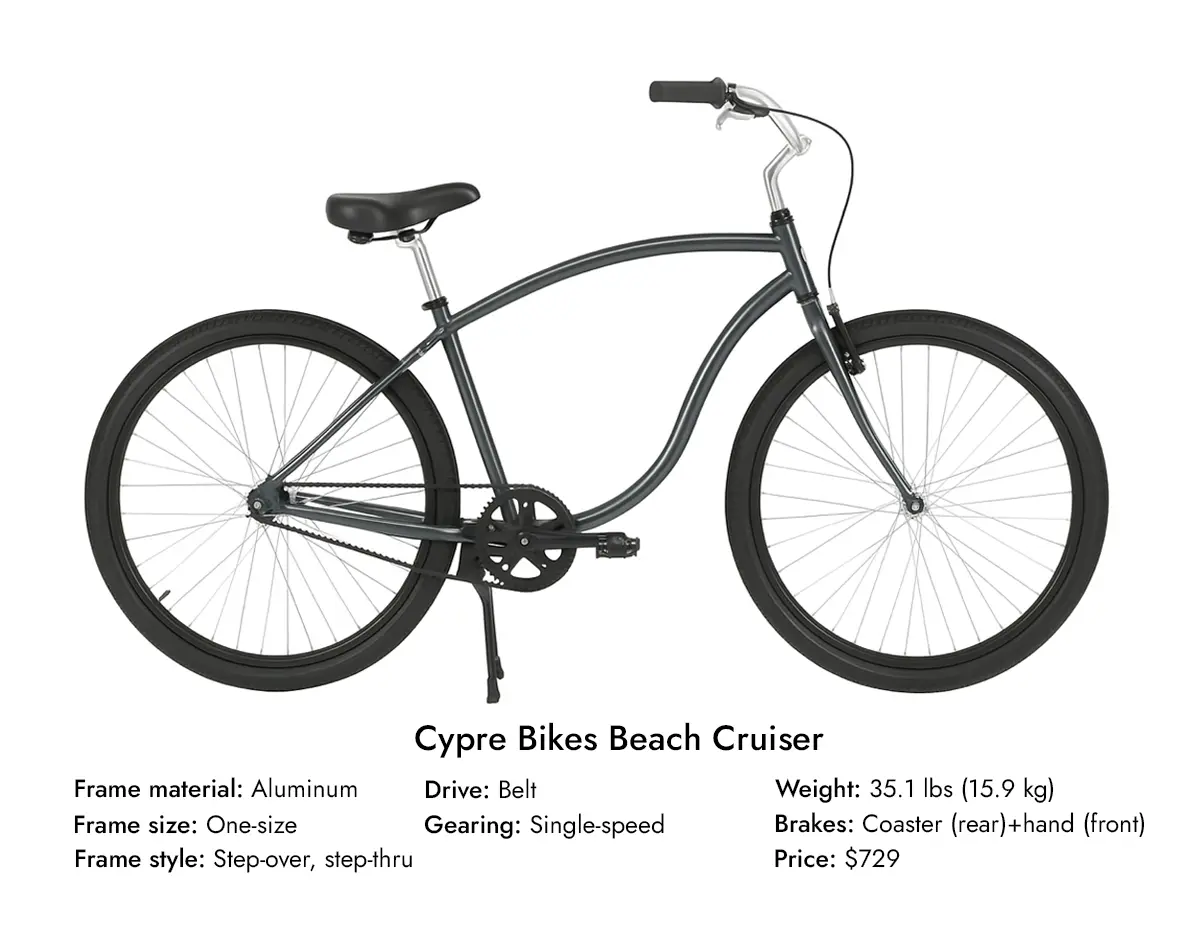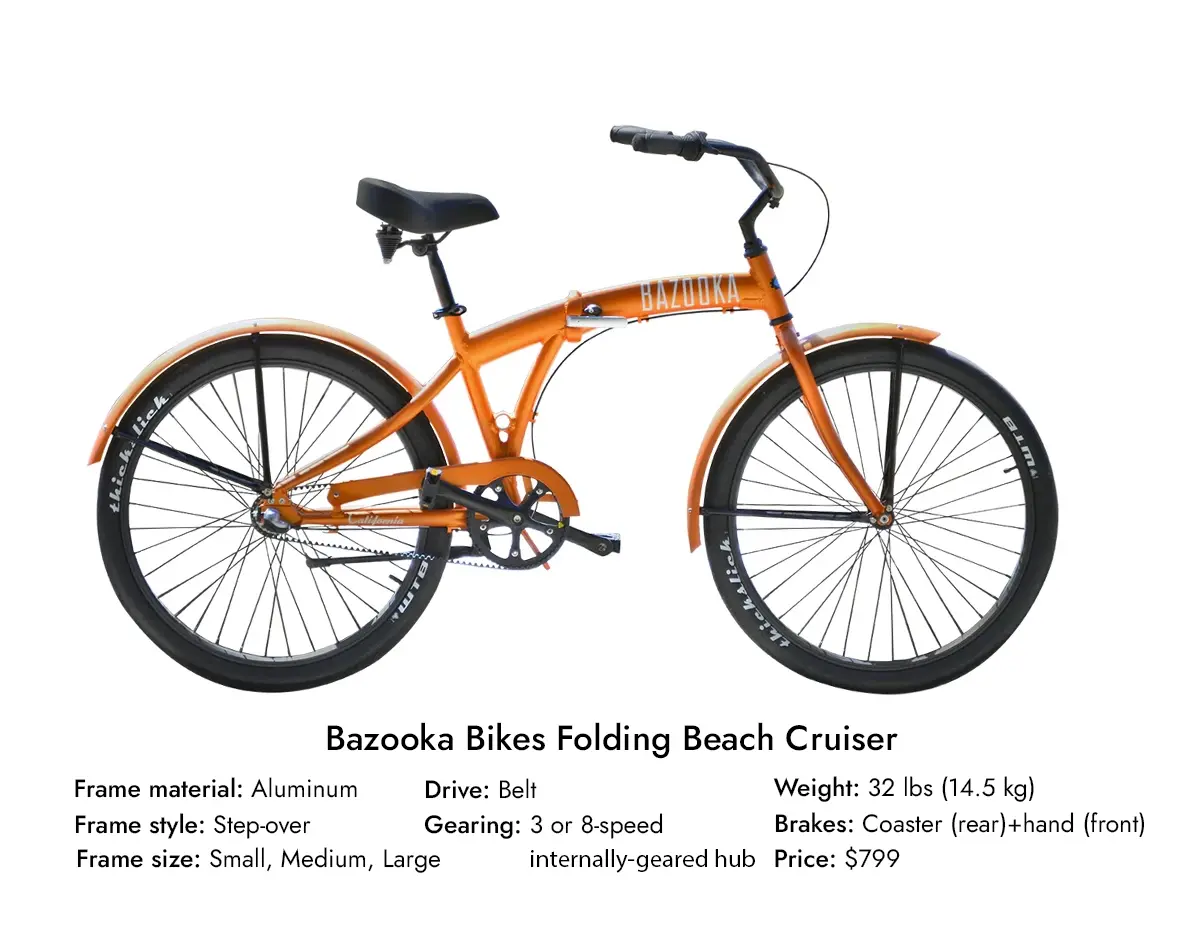TL;DR:
Choosing the right beach cruiser is all about matching comfort, durability, and personal style — whether you're rolling along the boardwalk or taking relaxed neighborhood rides.
- Prioritize comfort-oriented design
- Material matters: steel vs aluminum
- Choose gearing and accessories based on your use
Sunshine on your face, salt in the air, and a bike that feels like a summer song on two wheels—welcome to the world of beach cruisers. These laid-back beauties aren’t just for the boardwalk anymore; they’re for lazy coffee runs, neighborhood hangs, and living life in the slow lane (in the best way possible). Whether you’re chasing sunsets on the coast or just looking to add some good vibes to your daily ride, picking the right cruiser is the first step to making every ride a mini vacation. Let’s roll into the essentials of finding your perfect match—classic or electric, retro or modern.
Define your ride style
Beach cruisers are one of the most beginner-friendly bikes. Their upright riding position, wide tires, and simple design make them stable, comfortable, and unintimidating. They are perfect for new riders or anyone getting back into cycling after a long break.
Before picking out your cruiser, think about how you’ll actually use it. Is it your ride for boardwalk loops, coffee shop runs, or lazy spins around the neighborhood? If you’re cruising short, flat distances, you can keep things simple—performance, gearing, and weight won’t matter much. A comfy seat, maybe a basket for small hauls, and a style you vibe with might be all you need.
But if you plan to ride farther, tackle hills, or even use your cruiser to commute, you’ll want a higher-performing bike with multiple gears or electric assist. An e-cruiser can extend your range, take the edge off the uphill grinds, and get you where you’re going with less sweat. Just know how much help you want from the bike—whether you’re looking for a little push or a full-on boost. Your ideal cruiser should match your lifestyle, not just your aesthetic.
Key Takeaways
- Choose your cruiser based on ride style
- Select the right frame material and fit
- Gearing matters for versatility
- Electric assist can elevate your ride
- Prioritize comfort, control, and low maintenance features
Bike frame matters: form meets function
So much of the decision will hinge on the aesthetic of the bike. And that is absolutely okay. If you don’t like the overall look of the cruiser you are considering, you likely won’t spend much time behind the bars.
Frame style: Step-over vs. step-through
For cruisers, there are two main frame styles to choose from. First is the step-over frame style, where the toptube is high, creating a distinct front triangle. The other option is a step-through style frame, where the toptube drops low or is absent altogether, depending on the design.
Traditionally, step-over frames have been for men, and step-through frames for women; however, many modern bike manufacturers have moved away from gender-specific design altogether.
Frame material: steel vs. aluminum
While frame material won’t drastically change how a cruiser rides, it does affect the bike’s overall weight and durability. Most cruisers are made from either steel or aluminum. Steel is heavier but offers a classic look, increased durability, and a slightly more forgiving ride. Aluminum, on the other hand, is lighter, more corrosion-resistant, and provides a stiffer, more responsive feel—especially useful in coastal environments.
Frame fit: One size doesn’t always fit all
Part of what makes cruisers so relaxed to ride is their geometry. With a long wheelbase, slack head tube angle, and low center of gravity, they offer smooth, stable handling at slower speeds. The upright seating position takes pressure off your back, wrists, and shoulders, making them ideal for comfort-first riders.
Many cruisers come in a single frame size, but that doesn’t mean they fit everyone equally. A proper fit means you can sit upright, pedal comfortably, and easily reach the bars without feeling cramped or stretched. If the bike feels too small or too long, your ride experience will suffer. Always check the size guidelines, or better yet, test ride first. Here are several popular cruiser bicycles as they correspond to rider height:
For shorter people:
For taller people:
Gearing up: Single-speed, multi-speed, or electric assist
When we picture a beach cruiser, we often imagine a single-speed bike — pure simplicity, no fuss. But that simplicity has limits: one gear means hills and longer distances become a workout, and the upright cruiser geometry isn’t ideal for standing and grinding. But if your route includes hills, longer distances, or you just want a little more versatility, a multi-speed cruiser.
Derailleurs
Patented in 1905, an external derailleur is the tried and true gearbox for bicycles. Derauliers used on modern beach cruisers offer 6 to 8 speeds, with 7-speed being the most common. They offer plenty of gearing for casual riding, are very cost-effective and easy to service and are quite light. That said, they do require a bit more upkeep, like cleaning and adjusting and are susceptible to weather-induced wear and tear.
| Derailleur Model | Speeds | Notes |
|---|---|---|
| Shimano Tourney | 6- or 7-speed | Entry-level and super common. Found on affordable cruisers like Schwinn or Huffy. Simple and effective for moderate terrain. |
| Shimano Altus | 7- or 8-speed | Slightly smoother and more refined than Tourney. Found on mid-range cruisers like Electra or Sixthreezero. |
| Shimano Acera/Alivio | 7- to 9-speed | Higher-end recreational options. Smoother shifting and better for light commuting or hilly areas. |
| SRAM X3 or X4 | 7-speed | Occasionally used on budget-friendly e-cruisers. Comparable to Shimano Tourney. |
| MicroSHIFT Mezzo or Acolyte | 7- or 8-speed | Gaining popularity as a solid alternative to Shimano. Smooth, budget-friendly shifting. |
Internally Geared Hubs
If you value reliability, low maintenance, and a clean aesthetic, an internally geared hub (IGH) might be the cruiser drive train that you’re after. Most common and widely available geared hubs have 3 speeds; they are ideal for light hills and everyday cruising. Seven-speed hubs offer more range and flexibility, and are great for moderate terrain and longer rides, with 8-speed hubs considered a step up in refinement and are often seen on premium cruiser-style commuter bicycles. Finally, high-end hubs like Shimano Alfine 11 or Rohloff Speedhub 14 offer the utmost range but at a significant premium, and are reserved to custom or luxury builds.
| Hub model | Speeds | Notes |
|---|---|---|
| Shimano Nexus 3 | 3-speed | Classic, durable, and widely used on comfort/cruiser bicycles. Smooth operation and low maintenance—ideal for flat terrain. |
| Sturmey-Archer AW | 3-speed | An iconic British hub dating back to 1936. Still popular on vintage-style cruisers for its simplicity and reliability. |
| Shimano Nexus 7 | 3-speed | Adds more range for moderate hills and longer rides. Found on mid- to high-end cruisers and hybrid-style city bikes. |
| Shimano Alfine 8/11 | 8- or 11-speed | Premium hub with smoother shifting, better sealing, and higher efficiency. Often seen on commuter-style cruisers and e-bikes. |
| Rohloff Speedhub 14 | 14-speed | Ultra-premium, overkill for most cruisers but offers unmatched range and reliability. Used in custom/touring builds. |
| Enviolo (formerly NuVinci) | CVT (Continuously Variable Transmission) | Unique twist on IGH with stepless shifting. Found on some high-end e-bikes. Great for ultra-smooth cruising, no gear steps. |
Electric assist options
Sometimes you just want to cruise without breaking a sweat, and that’s where electric assist shines. Electric motors bring a whole new level of fun and versatility to the beach cruiser world, helping you glide over hills, stretch your range, and enjoy every ride with less effort. From gentle pedal assist to full-throttle boosts, today’s e-bikes make cruising effortless and exciting.
At the core of any e-bike are three components: the motor, battery, and controller. Motor power typically ranges from 200W to 750W, with 750W being the legal street limit in the U.S. For reference, a strong amateur cyclist can sustain 100–300 watts, while pros peak at 600–750W. So a motor can effectively double or triple your output, almost like having Lance Armstrong helping you pedal. Anything above 750W is considered off-road only.
Below you’ll find common motor sizes with typical use cases.
| Motor power | Use case summary | Typical Features & Notes | Ideal For |
|---|---|---|---|
| 250W | Light assist, casual use | PAS only; best for flat terrain; low torque | Urban commuting, casual riders, e-cruisers on flat terrain |
| 350W | Moderate assist, mixed terrain | More torque than 250W; still light; often throttle-less | Light hills, moderate commuting, lightweight riders |
| 500W | Versatile power, confident climbing | Often includes throttle; good for steeper hills and heavier loads | Beach cruisers, city e-bikes, casual touring, larger riders |
| 750W | High power, steeper climbs, utility | Max allowed for Class 1–3 in U.S.; strong acceleration & torque | Cargo e-bikes, off-road cruisers, long commutes, hills |
| 1000W+ | Off-road/adventure/utility | Often exceeds Class 3 limits; requires licensing in some areas | Fat-tire cruisers, hunting/adventure bikes, steep off-road |
An e-bike’s battery is its fuel tank, and its capacity, measured in watt-hours (Wh), determines how far you can ride. Just like a muscle car burns more gas than a compact, a high-powered motor drains more energy than a smaller one. That’s why manufacturers carefully match motor size to battery capacity, balancing power and range for each bike’s intended purpose.
| Battery | Capacity (Wh) | Estimated Range* |
|---|---|---|
| 250Wh | Low | 15–30 miles |
| 400Wh | Mid | 25–45 miles |
| 500–600Wh | High | 35–60 miles |
| 700–900Wh | Long Range | 50–100+ miles |
The controller is the “brain” that takes your inputs, such as how fast (cadence) or how hard (torque) you’re pedaling, or how much throttle you apply, and translates them into the signals for the motor. Since electric motors produce instantaneous power, the controller smooths it out for a natural ride feel. Most let you fine-tune the assist level and throttle response by choosing between modes like “cruise,” “sport,” or anything in between.
Cadence sensor ride
How the controller reads your input shapes the feel of your ride. Budget e-bikes often use cadence sensors, which detect pedal speed, not force, so the assist can feel a bit on-off, regardless of how hard you’re pedaling. There’s often a slight delay before the motor kicks in, which can make starts, especially uphill, a little awkward. Still, for relaxed cruising on flat paths, the difference is minor and easy to adapt to.
Torque sensor ride
Torque sensors measure how hard you pedal, and amplify that effort proportionally – it starts gently and ramps up smoothly, which makes it easier to modulate speed and ride efficiently; it’s particularly helpful on climbs or when trying to maintain steady cadence.
Dual sensor ride
When you combine cadence and torque sensors, you get a smooth, immediate startup and the dynamic, responsive support based on how hard you pedal. This combination is mostly available on premium e-bikes, usually equipped with mid-drive motors.
Notable models: Ride1Up Vorsa, Velotric Discover 2, Leoguar Zephyr ST
Classification
Street-legal e-bikes with the motor’s power rating of 750W or less are divided into three classes. The class determines whether the bike’s motor is only triggered when you start pedaling, known as the pedal-assist system (PAS), or if it has a throttle that also engages the motor, and the bike’s top speed.
Class 1 - These e-bikes are equipped with a pedal-assist system that will amplify your effort up to the top speed of 20 MPH. Once you reach this top speed, the assistance will cut off but the bike won’t stop, so if you want to go faster, you’ll have to do all the work.
Class 2 – offers both pedal assist and a thumb-actuated throttle that can be used independently. Unlike a motorcycle-style twist grip, the thumb throttle allows you to maintain control of the brakes while engaging power, which makes it safer and easier to use. Although it is possible to ride a Class 2 e-bike like a moped by relying only on the throttle, most riders use it for short bursts of power, such as getting started or climbing a hill, without having to pedal hard.
Class 3 - similar to Class 1 e-bikes with a pedal assist system, but the maximum assisted speed is raised to 28 MPH. Some Class 3 e-bikes ship with a throttle and are considered dual-mode. The throttle cuts off at 20 MPH.
Popular electric beach cruisers:
Comfort is King
Comfort is the number one reason people choose beach cruisers. Since every rider is built a little differently, even the most comfortable bike might not feel perfect right out of the box. Fortunately, cruisers are highly customizable. As long as the basics suit you, it’s easy to fine-tune the rest for a better fit.
Most parts, like the saddle, handlebars, grips, and pedals, can be swapped out. A wide, cushioned seat with springs helps absorb bumps, while swept-back handlebars support an upright, relaxed posture. Even electric cruisers, despite their extra tech, can be adjusted to match your ergonomic needs. And if you’re not sure where to start, shops that specialize in beach cruisers usually carry a wide range of comfort-focused upgrades.
Tire talk: The beauty of balloons
Beach cruisers usually come with wide tires, typically between 2.5 and 4 inches, which provide a smoother ride, better balance, and improved traction thanks to a larger contact patch with the ground. While wider tires are great for comfort, extremely wide ones can feel sluggish and harder to pedal.
Cruiser tires are either smooth or have light tread for a bit of off-road grip. Although not built for trails, they can handle sand and dirt well, which makes them ideal for beach paths. Some electric cruisers use reinforced tires with thicker sidewalls to handle the extra weight and torque from the motor. These tires also offer better protection against punctures.
Tire pressure affects how the bike feels. Most cruiser tires recommend a range between 20 and 50 PSI, printed on the sidewall. Staying within that range is important for comfort and safety. A few pounds of pressure in either direction can change the ride. Higher pressure can make the bike feel stiff and bouncy, while lower pressure may feel soft and sluggish. Investing in a pump with a built-in gauge makes it easier to find the sweet spot.
Because cruisers often sit unused between rides, tires can slowly leak air. It’s common to see riders struggling with underinflated tires. Checking and topping off your tire pressure before every ride is one of the easiest ways to improve your experience.
Braking basics
Classic single-speed beach cruisers often come with coaster brakes, also known as kick brakes. These are the kind you may remember from childhood, where you pedal backward to slow down. They’re simple and intuitive but not very powerful and offer limited control, especially when braking on hills or in wet conditions.
As cruiser designs evolve, many now feature V-brakes with hand levers near the grips. When squeezed, the caliper presses brake pads against the rim to slow the bike. These provide stronger stopping power and more precision than coaster brakes.
Most electric cruisers use disc brakes, which are the most advanced option. Instead of rim friction, they use a rotor at the wheel hub for consistent, powerful braking. This is especially important when dealing with added motor weight and higher speeds. Disc brakes are more effective in wet weather and better suited for hills or heavier loads.
While disc brakes cost more, the added control is often worth it. If you’re mostly cruising flat streets or boardwalks, coaster or V-brakes will do the job. But for hilly routes or e-bike setups, investing in disc brakes is a smart move.
Belt Drive
Cruisers are often seen as low-maintenance, especially since most people use them for short, casual rides. However, in coastal areas where salt, sand, and humidity are common, traditional chains can wear out quickly. Belt drives are made of carbon-reinforced rubber that doesn’t rust, so they’re practically immune to salt air corrosion. A cruiser with a belt drive requires no oiling or degreasing and can be cleaned easily with just a hose, making it one of the most maintenance-free options available.
Practical and style upgrades
There’s something special about personalizing a beach cruiser. Whether it’s swapping the saddle for vintage leather, adding colorful grips and fenders, or stringing lights along the frame for sunset rides, each change reflects your style. Customizing isn’t just about looks; it turns your cruiser into a bike that feels truly yours.
Beyond aesthetics, accessories can make your cruiser more practical and adventure-ready. Start with fenders to block sand and water, especially after a surf or summer rain. Add a front basket for market runs, a rear rack for extra cargo, and lights or reflectors for early morning or evening rides. Many modern lights are rechargeable and easy to mount, adding both safety and style.
Most beach cruisers come with a basic kickstand, but there’s plenty of room to upgrade. A chain guard will protect pants and shoelaces, a cup holder keeps your coffee close during a sunrise cruise, and a phone mount ensures easy access for navigation or playlists.
If you plan to use your cruiser for commuting or longer rides, accessories like baskets, racks, and panniers can turn it into a capable hauler. Mirrors add visibility in traffic, and many electric models already include integrated lights or USB charging ports wired into the main battery.
For best fit and function, buy structural accessories like fenders, racks, lights, and kickstands from the bike manufacturer. These are designed to match your specific frame and will install more easily and perform better over time. Smaller add-ons such as grips, bells, and baskets can often be sourced from third-party brands, giving you plenty of room to mix comfort with creativity.
Test ride like a pro
Before committing to a beach cruiser, take it for a test spin. A few laps around the block can give you a basic feel, but spending more time on the bike is ideal. Many shops offer full-day demos, and if you decide to buy, they’ll often apply that rental fee toward the purchase.
Fit and feel
Pay attention to how the bike fits your body. Are you sitting upright and relaxed, or hunched over? Do your knees bump the handlebars? Can you mount and dismount easily, or does it feel awkward? If the setup feels off, try a different size or a step-through frame.
Brake and shift check
Make sure everything works as it should. Test the brakes—whether coaster, rim, or disc—to ensure they engage smoothly and stop the bike effectively. For hand brakes, check if you can comfortably reach the levers. If not, ask the shop to adjust them. If the bike has gears, shift through each one. Smooth, responsive shifting means the drivetrain is well-tuned. If there’s hesitation or skipping, it may need adjustment.
Handling and weight
Try turning corners, hopping curbs, and getting a feel for how the bike handles. Consider the bike’s weight and how it’s distributed. Will you need to lift it onto a car rack or carry it up stairs? Accessories like baskets or racks can shift weight unevenly, so check how the bike feels fully loaded.
For E-bikes: test the power
If you’re trying an electric cruiser, test every power mode, from eco to turbo. Begin in the lowest setting and ease into pedaling to feel when the motor engages. Each mode adds more torque, so be cautious as you increase power levels. With Class 2 e-bikes, try the throttle gradually to avoid sudden bursts of speed.
E-bikes accelerate and stop faster than regular bicycles. Familiarize yourself with the brakes using light, controlled pressure rather than grabbing them hard. This helps avoid abrupt stops while giving you a sense of braking strength.
E-bikes offer a different experience. They’re faster, heavier, and more responsive, which can feel intimidating at first. If you’re unsure after a test ride, a regular cruiser may be a better fit. That’s exactly why test rides exist – to help you find the bike that feels right.
Shop smart: online vs. local
When deciding where to buy your beach cruiser, you’ll need to weigh the benefits of shopping at a local bike shop versus ordering online. Local shops offer expert guidance, in-person fittings, and the chance to test ride different models. Each bike is professionally assembled and tuned, which ensures everything is ready for a worry-free adventure. Shops may also provide ongoing support, such as free adjustments or discounted service. However, prices are often higher, and selection may be limited to the brands they carry.
Buying online can be more affordable and gives you access to a wider range of models, colors, and customizations. Many direct-to-consumer brands ship straight to your door, often at a lower cost than retail. The trade-off is that you can’t test ride the bike before purchase, and you’ll likely need to do some assembly yourself. Customer service and warranty support may also take longer to navigate. If you value convenience and selection, online shopping is appealing. If personal service and peace of mind matter more, your local bike shop is a smart place to start.
Why get bike insurance?
Whether you’re locking up at the beach or storing your bike at home, cruiser theft is more common than you might think. Bikes are often taken from garages, yards, and even inside residences, and unfortunately, most are never recovered. Specialty bike insurance covers your cruiser for its full value, whether it’s stolen from the street or your own property. As long as the bike is secured to an immovable object when unattended, you’re protected.
Damage is another real concern. A cruiser can be knocked over, fall from a car rack, or get damaged in transport. Even a slow-speed crash can lead to costly repairs or a total loss. Specialty policies cover accidental damage, including incidents that happen off the bike. Some also include coverage for riding apparel and spare parts. If you’ve invested in your cruiser, insuring it is a smart way to protect both your bike and your wallet.
Optional coverages provide even more peace of mind. You can add protection for medical expenses if you’re injured while riding, or choose liability coverage in case you’re involved in an accident with another person or their property. These add-ons let you tailor your policy to match how you use your bike, making your coverage as versatile as the cruiser itself.

